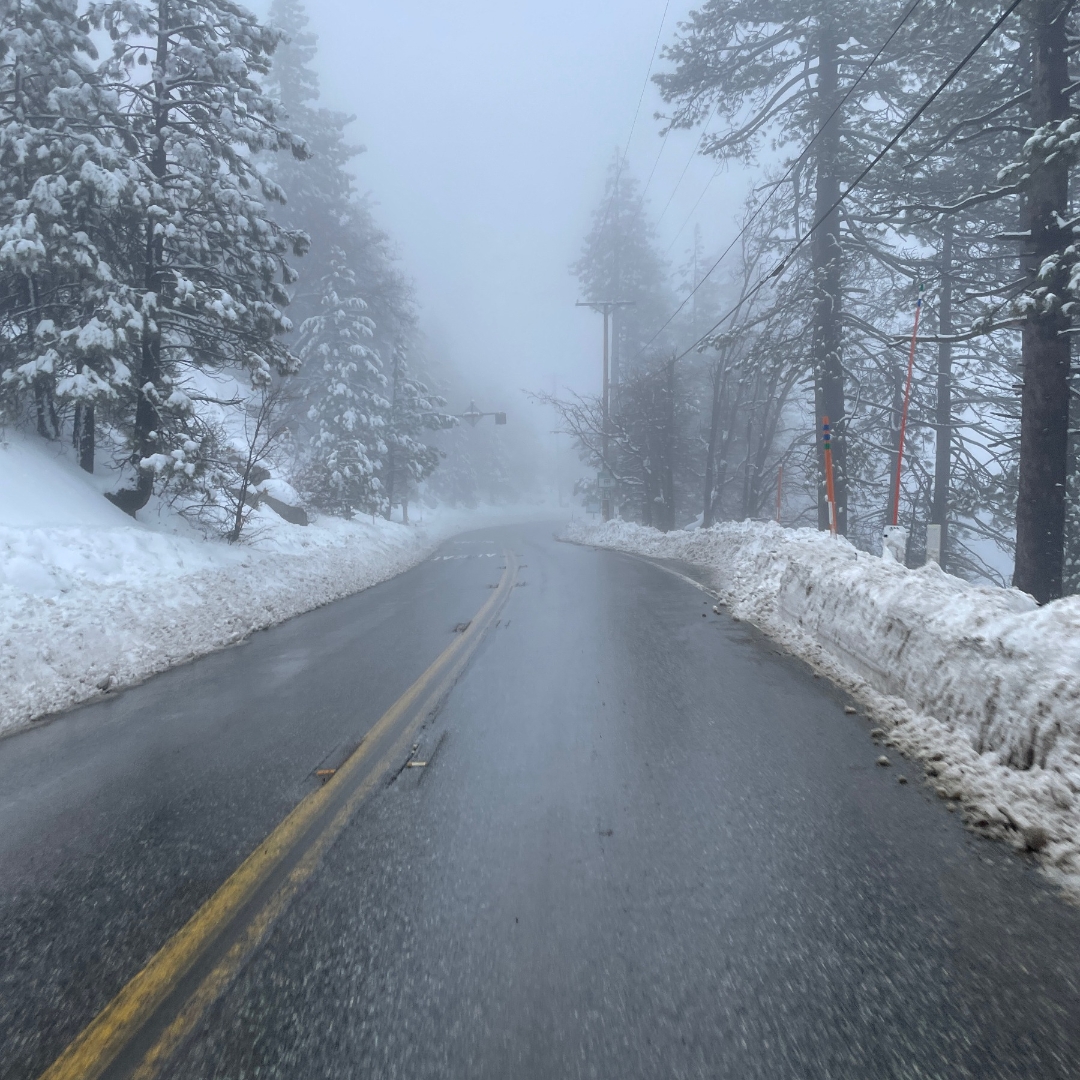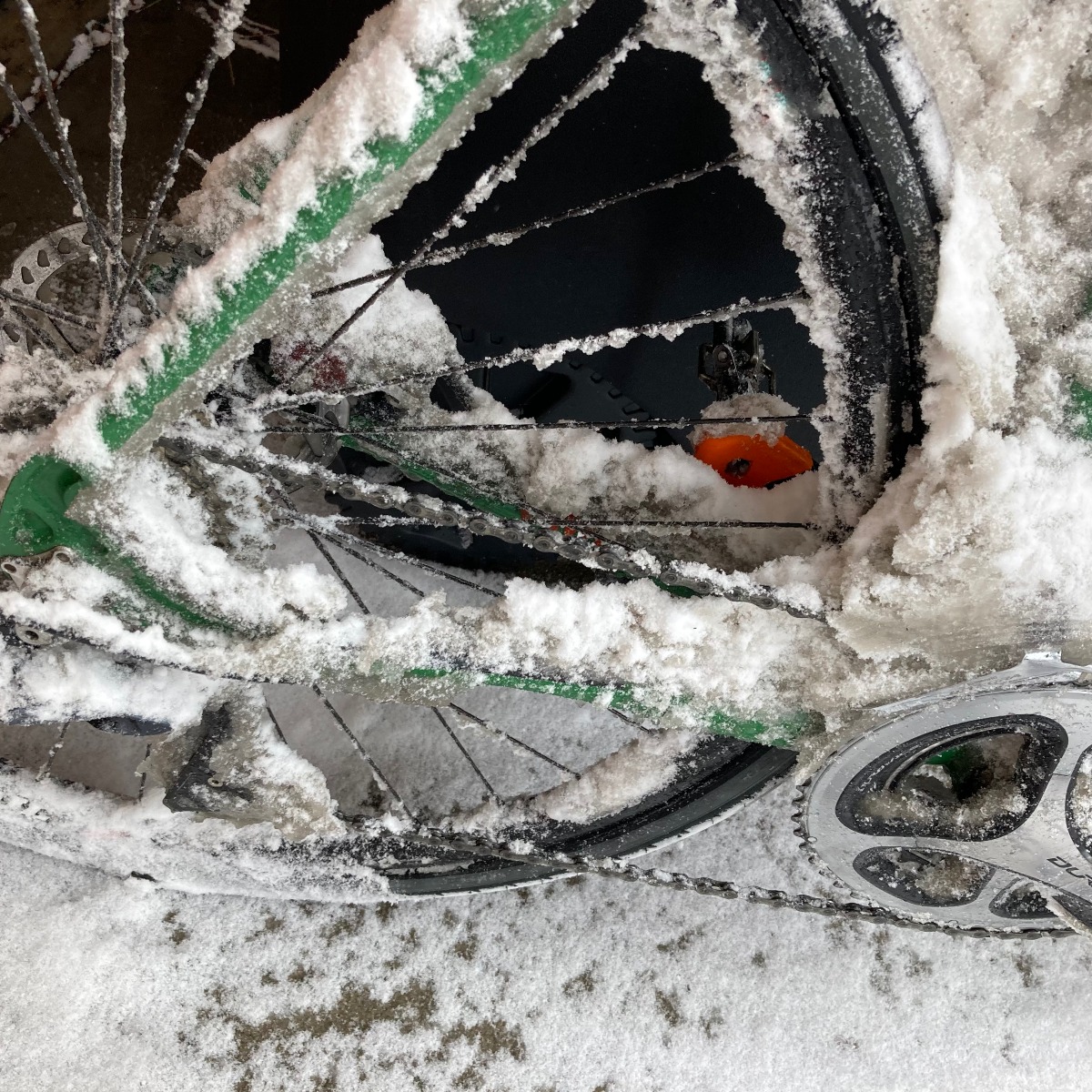
Winterize Your Ride Pt. 3
- Dec 5, 2022

In our final segment on Winterizing Your Ride, we’ll get a bit more technical as we discuss ways to keep your ebike running safely and smoothly through the coldest months. Again, expectations are everything, so understanding that a little extra work is needed will save some headache and hassle down the road.

- Tires. The wider the tire, the more contact you’ll have with the ground. Lugged mountain bike or even spiked snow tires will give you firmer footing across snow and ice. Your local bike shop can offer advice on tire choices for your particular bike model.
- Tire Pressure. Lower tire pressure allows your tire tread to better adapt to the terrain. Tubeless tire systems allow tires to be run safely at lower pressures than tubed tires. Make sure to use a tire sealant like Orange Seal’s Subzero Sealant that’s capable of working far below freezing temperatures.
- Drivetrain. Keep your bike’s chain and gears clean and well lubed. This will not only keep your bike shifting correctly, but will also prohibit rust. If riding in the wet, wipe down and relube your chain with each ride, using a wet weather chain lubricant.
- Brake pads. Disc brakes provide consistent braking performance, but they will wear more quickly in wet and dirty conditions. Consider installing new brake pads. Pro tip: metallic pads will last longer but will also make more noise, while organic pads will wear faster, but more quietly when wet.
- Fenders. Keeping water off your body is key to staying warm. Good fenders will also minimize road spray on your bike, keeping it and you, much cleaner. If your bike doesn’t have fenders or if your current fenders don’t offer enough coverage, there are several fender and fender extender options available from companies such as SKS Germany.
- The Squeaky Wheel. While grease keeps various parts moving freely, extended foul weather riding can require more routine maintenance of areas such as wheel, freehub and headset bearings, along with the bottom bracket. If you're not comfortable working on these areas, take your bike to your local bike shop for a winter assessment. This will ensure that rust does not foul up the main areas of friction on your bike.
- Adulting. Upon finishing each ride, make sure your bike is free of water and road salt, to avoid rust and any potential damage from freezing in the garage. If you ride on salted roads, a quick spray down of the bike will keep corrosion at bay. One BULLS owner uses a leaf blower to blow dry his bike after wet rides. An air compressor can also be used, but caution is necessary around wires and seals. If neither are available, a rag towel can do the trick.
eBike Specific Care:
- eBike Battery Operating Temps. Lithium Ion batteries lose potency in extremely cold weather, but can still be used. In general, batteries and motors on BULLS ebikes are designed to operate down to 25ºF and can tolerate temperatures to 15ºF, though battery life will be compromised. Under 15ºF should be avoided. You may be interested in a thermal sleeve to shield your battery from freezing temperatures.
- Storage. If your ebike is stored in a garage with temperatures below 50ºF, we recommend removing the battery after every ride and storing the battery inside the home.
- eBike Battery Charging. Similarly, eBike batteries should be charged above 50ºF. All BULLS ebike batteries can be removed easily and charged inside the home.
- Devil’s in the Details. Regularly examine all cables and wires for corrosion, If you find corrosion, bring your ebike into your BULLS dealer for further evaluation.
We hope these tips will help you enjoy a winter of wonderful riding. And for those in the South West, we hope you’ve been amused by these articles. Cheers!
Please also enjoy our first installment on General Cold Weather Riding expectations and the previous article on dressing for cold weather success.


